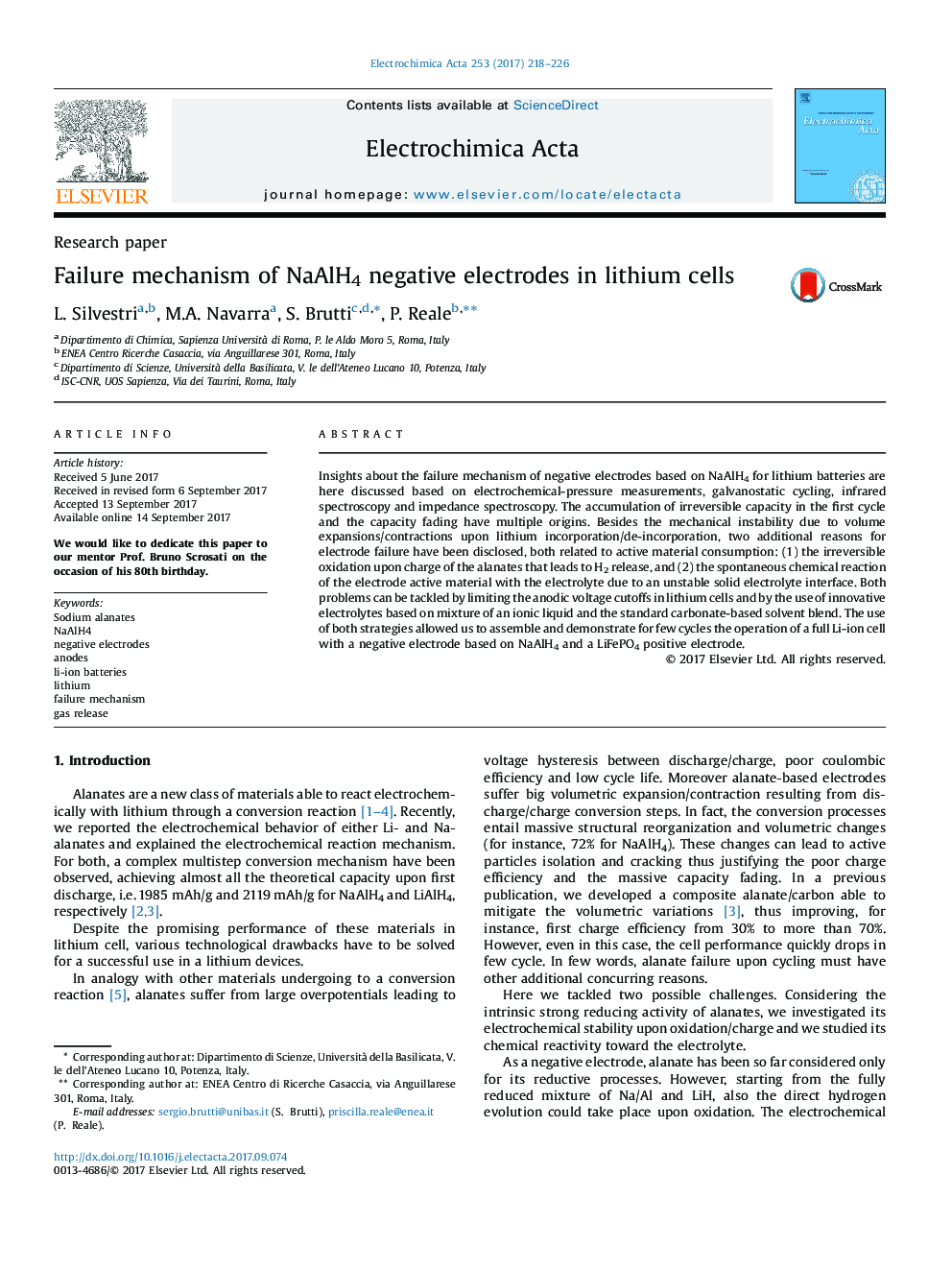| Article ID | Journal | Published Year | Pages | File Type |
|---|---|---|---|---|
| 6470087 | Electrochimica Acta | 2017 | 9 Pages |
Insights about the failure mechanism of negative electrodes based on NaAlH4 for lithium batteries are here discussed based on electrochemical-pressure measurements, galvanostatic cycling, infrared spectroscopy and impedance spectroscopy. The accumulation of irreversible capacity in the first cycle and the capacity fading have multiple origins. Besides the mechanical instability due to volume expansions/contractions upon lithium incorporation/de-incorporation, two additional reasons for electrode failure have been disclosed, both related to active material consumption: (1) the irreversible oxidation upon charge of the alanates that leads to H2 release, and (2) the spontaneous chemical reaction of the electrode active material with the electrolyte due to an unstable solid electrolyte interface. Both problems can be tackled by limiting the anodic voltage cutoffs in lithium cells and by the use of innovative electrolytes based on mixture of an ionic liquid and the standard carbonate-based solvent blend. The use of both strategies allowed us to assemble and demonstrate for few cycles the operation of a full Li-ion cell with a negative electrode based on NaAlH4 and a LiFePO4 positive electrode.
